#Pyrocumulus Clouds
Explore tagged Tumblr posts
Photo
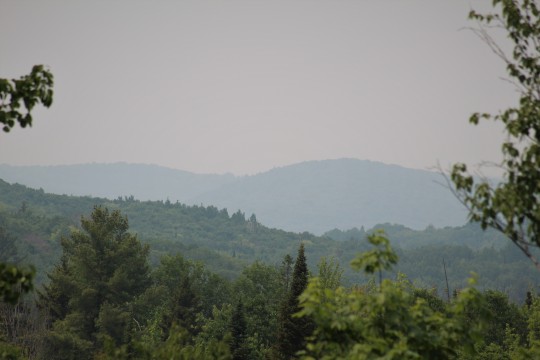
#Wildfires
Same scenery 3 years later.
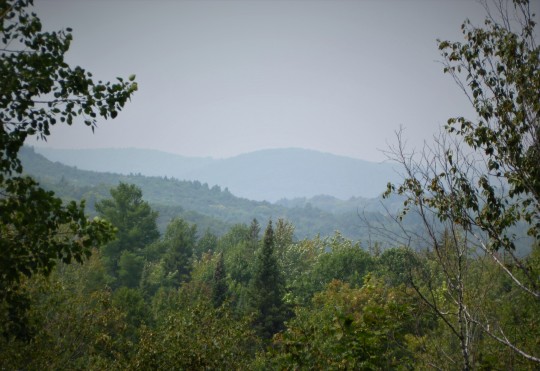
#ClimateChange
Seriously, everybody knows that the planet is really warming up. But hey!
Over 300 wildfires in Canada are actively ravaging the Western Territories and the Province of British Columbia fuelled by thousand of lightning strikes. Everything is burning down there. Houses, establishments, nature, wildlife…
It’s happening more than 5000km from here and it has been bringing us a high quantity of smog for over a month now with high temperatures in the area; even with the burning smell.
We have friends living in Vancouver, aka Raincouver where it rains pratically everyday, and they say that they haven’t received any rain for over 50 days.
Unbelievable!
#Climate Change#Planet Warming#Vital Signs#Pyrocumulus Clouds#Wildfires#ECCC#Environment and Climate Change Canada#Nature Photography#Mountainous Parts of the Northern Hemisphere#Canada#The RavenKeeper
420 notes
·
View notes
Text
When Fires Make Rain

The intense heat from wildfires fuels updrafts, lifting smoke and vapor into the atmosphere. As the plume rises, water vapor cools and condenses around particles (including ash particles) to form cloud droplets. (Image credit: L. Dauphin; via NASA Earth Observatory) Read the full article
#cloud formation#convection#fluid dynamics#physics#pyrocumulonimbus#pyrocumulus#science#thunderstorm#turbulence#updrafts#wildfire
103 notes
·
View notes
Text


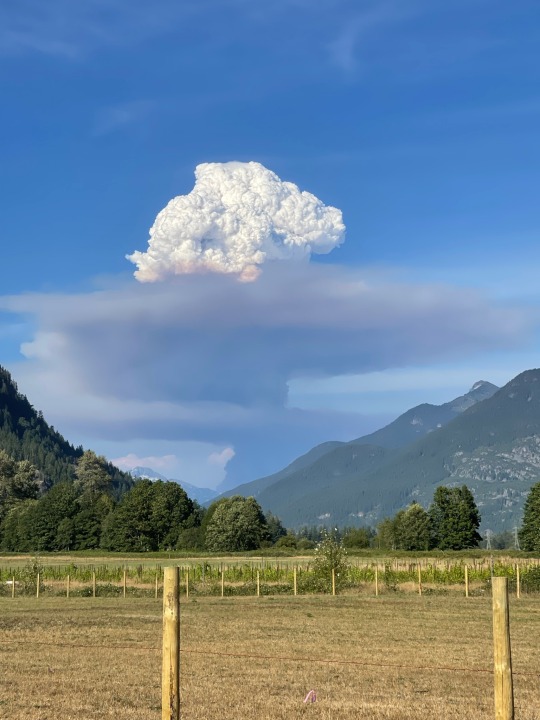
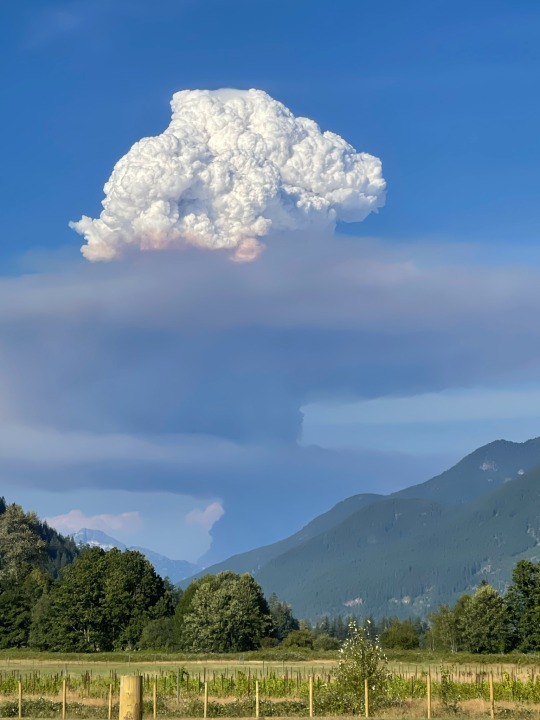
530+ acre fire near my home made a spectacular and terrifying pyrocumulus cloud. People pulling off road to look. It can be seen all the way at the coast.
0 notes
Text
Saw a video on TikTok of a volcano spitting lightning from a pyrocumulus cloud, and that shits even wilder in motion. I think those societies with volcano gods were on to something.
42 notes
·
View notes
Text
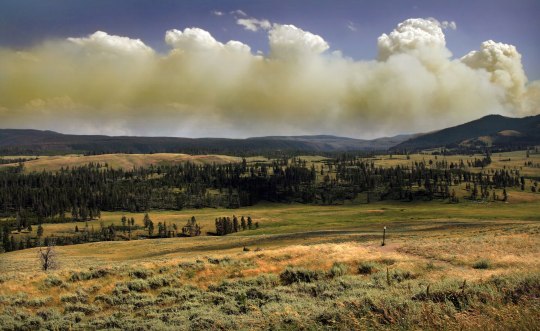
Wildfire in Yellowstone National Park produces Pyrocumulus clouds
#wildfire#wild fires#wild fire#yellowstone#national park#yellowstone national park#clouds#nature#nature walk#photography#nature photography#curators on tumblr#curators#wikipedia#wiki
23 notes
·
View notes
Text
#1105 What causes a fire tornado?


What causes a fire tornado? A fire tornado is caused when the intense heat from the fire rapidly warms the air above the ground and makes it rise in a spiral. Fire tornadoes are fairly common, but it is very uncommon for someone to see them because you would need to be in the middle of a forest fire or some other kind of vast fire. If you search on YouTube, you can find examples of them. Fire tornadoes are also actually not tornadoes, which is why they have several different names. They are called fire whirls, fire devils, fire whirlwind, fire twister, and sometimes firenado. I am going to continue to call them fire tornadoes, though. Why are they not tornadoes? A tornado is a column of air that descends from a massive thunderstorm, while whirlwinds, waterspouts, and fire tornados rise up from the ground and don’t have to be associated with a thunderstorm, thus they are not really tornadoes. In a tornado, there is always a supercell thunderstorm, which is much bigger than a regular thunderstorm. Rising warm air and sinking cold air in the middle of the supercell make it rotate. As the supercell gets bigger, more warm air goes upwards and cold air comes out of the middle of the storm towards the ground. The warm moist air creates a spinning funnel in the middle and the cold sinking air pulls the funnel down to the ground, where it becomes a tornado. Waterspouts and fire tornadoes form in a similar way and it is the exact opposite way to a tornado. A tornado is pulled down from the sky by the sinking cold air, but a waterspout and a fire tornado are pulled up from the ground by the rising warm air. In the case of a waterspout, the sun heats the surface of the sea and the air above it. The warm air rises up, carrying a lot of moisture with it because warm air has more energy, which means it can hold more water. This happens anywhere when the sun heats the sea but when there is a strong horizontal wind, a waterspout can form. The horizontal wind blows past the rising warm air and spins it. Once the waterspout has started to spin, the wind makes it go faster and a column of water is sucked up into the sky. Waterspouts are not as powerful as tornadoes, and they don’t last very long. A fire tornado forms in the same way as a waterspout, but the ground is heated by the fire and not by the sun. This usually happens during a wildfire, although fire tornadoes occurred during the firebombing of German and Japanese cities during World War 2. Wildfires create their own wind and weather, which leads to the formation of fire tornadoes. The main principle is that warm air rises. When the fire starts, the center of the fire becomes very hot. The temperature can get over 1,000℃, which is almost hot enough to melt gold. The fire heats the air above it, which rises very quickly. When the air rises, it creates a vacuum where it was, which draws more cold air and fire into it. This air is then heated and rises, creating a circular effect. The air that is drawn into the fire brings in more oxygen, which makes the fire burn more fiercely and hotter, making more hot air rise. This rising hot air can cause clouds to form. The hot air carries a lot of ash and when it gets higher, it starts to cool down. The water it is carrying condenses on the ash and forms clouds called pyrocumulus, which means “fire cloud”. The fire clouds can become storms in their own right and there is often lightning, which can light even more fires. The whole system feeds itself and is incredibly difficult to extinguish. In the same way as a waterspout, the rising hot air from the center of the fire can get spun by the fast winds coming in to to fill the void where the air had been. When they spin the column of air, it sucks fire up with it, creating a rising fire tornado. Owing to climate change, wildfires are becoming more common and there will be more fire tornadoes because they are a natural phenomenon. Wildfires are almost impossible to extinguish because they are too big and too hot. The only thing that firefighters can do is to try to cut fire gaps so that the fire can’t head towards towns or farms. This doesn’t always work and the wind that the fire creates can make the fire jump large gaps. The hot dry air above the fire dries out all of the vegetation, making it more flammable. And this is what I learned today. Photo by Frank Cone: https://www.pexels.com/photo/eruption-of-volcano-18092546/ Sources https://en.wikipedia.org/wiki/Fire_whirl https://science.howstuffworks.com/nature/natural-disasters/fire-tornado.htm https://www.youtube.com/watch?v=YvfDbODi-vQ https://en.wikipedia.org/wiki/Tornado https://www.britannica.com/story/how-do-tornadoes-form https://www.accuweather.com/en/weather-news/how-destructive-wildfires-create-their-own-weather/346337 https://wfca.com/wildfire-articles/wildfire-temperatures-how-hot-can-wildfires-burn https://blog.gov.bc.ca/bcwildfire/wildfire-tactics-what-it-takes-to-put-it-out Read the full article
2 notes
·
View notes
Text
Bayo 3/Persona 5 Au Pt. 1
So I have some loose ideas for Bayo 3/Persona 5. I've been thinking it over a lot trying to make everything work. There are a few things I've nailed down, but others not so much. Let me know what you guys think, and feel free to add your own suggestions! There's a lot here, so I'll split it up into two parts. No major spoilers in this post, but proceed at your own risk nonetheless
So you know the upcoming mobile spinoff, Persona 5: The Phantom X? I was thinking that the protagonist of that game, who I'll just call Wonder for convenience's sake, could be Viola. The owl mascot Luffy(or is it Luffle?) could be Cheshire
Luffy has three forms: a good luck charm that hangs from Wonder's weapon, a small anthropomorphic owl, and a large, terrifying owl demon
Wonder and Luffy team up with the rest of the Phantom Thieves to save the multiverse from Singularity
Something about Wonder calls out to Joker, but he can't figure out what
The Phantom Thieves travel from universe to universe to find Chaos Gears. They find other versions of themselves and new demon allies
Each universe they travel to has a different Joker and maybe two other thieves
For example, in the first alternate universe they visit (I would switch Tokyo with New York and vice versa) there's the Street Smart Witch Joker as well as Ryuji and Ann, who are killed right before they arrive. They then meet Seiten Taisei and Hecate, who agree to help, for a while
So the second-tier personas (ultimate personas in vanilla p5) are the temporary-contract demons who become fully accessible when the world they're introduced in is destroyed
As you might remember, in my au the number of demons a witch can contract with is directly related to their power. So this would demonstrate each thief growing stronger
When Joker performs the Deadly Sin ritual, he calls forth a third-tier persona, a demon's true and ultimate form. Imagine if you will:
"The power that bound this world is now mine, and its inevitable demise is moments away," Singularity spoke through the mouth of the Arch-Pyrocumulus. "And while I have no further use for this shell... There's time for a bit of amusement. Perhaps I'll simply crush you all like insects right now." He flew into the air, but as he sailed among the clouds, savoring his imminent victory, he heard it. "DO O IA JOKER! CNILA D COMSELHA ODO ANANAEL! TURBS C BABALON ZONAC CIAOFI BALZARG! FAFEN NIIS!" From beneath the clouds, a figure emerged. It was in the form of a humanoid man, but he was many times the size of even Arch-Pyrocumulus. He wore a sharp red suit and had yellow razor claws at the end of his fingers. Mechanical wings in the shape of a bat spread out behind him. In the rim of his fedora stood Joker, holding his disembodied heart and smirking. "What was that about crushing? I think you'll find we're extremely game for that." The demon lounged in the clouds, taking the cigarette out of his mouth and blowing a large plume of smoke. Raoul, King of Thieves, grinned dangerously. This was going to be fun.
I thought that perhaps it would make the most sense that this incarnation of the Deadly Sin Ritual would fuse two demons together to get the ultimate form, just like in Persona. For example, Joker performs the ritual using Captain Kidd and Seiten Taisei to awaken William
I'm trying to include everyone in this but it's proving difficult
Part two coming soon, hopefully, tomorrow!
#persona 5#persona 5 au#p5#p5r#p5 au#bayonetta au#bayonetta#bayonetta 3#more about wonder joker and goro in the next post
6 notes
·
View notes
Text

Bushfires Char Victoria
Hot, dry conditions and gusty winds fueled several bushfires in southeastern Australia. The MODIS (Moderate Resolution Imaging Spectroradiometer) on NASA’s Aqua satellite captured this image of smoke streaming from the region’s largest fire as it burned through parts of Grampians National Park in Victoria on December 20, 2024.
Ignited by lightning on December 16, the fire pushed north along the Wannon River toward the communities of Halls Gap, Bellfield, Lake Fyans, and Pomonal. Victoria officials urged residents of these communities to evacuate. Smoke from the fire also blanketed Melbourne, the capital and most populous city in Victoria. As of December 20, the fire had charred more than 120 square kilometers (46 square miles) of land, according to news reports.
A pyrocumulus cloud—also called flammagenitus—is visible above the smoke in the Aqua image. These tall clouds often appear in satellite imagery as opaque white patches hovering over darker smoke. Pyrocumulus clouds are similar to cumulus clouds, but the heat that produces updrafts comes from fire instead of the Sun heating the ground. As pyrocumulus clouds rise, water vapor cools and condenses and can produce rains and full-fledged thunderstorms, making them pyrocumulonimbus clouds (pyroCbs).
For scientists to classify a cloud as pyrocumulus or pyrocumulonimbus, cloud top temperatures observed by satellites must be minus 40 degrees Celsius (-40 degrees Fahrenheit) or cooler. According to U.S. Naval Research Laboratory meteorologist Michael Fromm, MODIS detected cloud tops with temperatures of -51°C at 05:30 Universal Time (4:30 p.m. local time) when Aqua acquired the image. This was the first pyroCb of the Southern Hemisphere summer that researchers have detected, according to Fromm.
A team of NASA-funded scientists working with the Injected Smoke and Pyrocumulonimbus Experiment (INSPYRE) has begun a multi-year effort to investigate which fires produce pyrocumulus clouds, what mechanisms cause them to inject smoke all the way into the stratosphere, and whether smoke transported by pyroCbs affects Earth’s radiation budget.
NASA Earth Observatory image by Wanmei Liang, using MODIS data from NASA EOSDIS LANCE and GIBS/Worldview. Story by Adam Voiland.
1 note
·
View note
Text
Intense blazes, including the #LineFire in Southern California, created “fire clouds” that matured into thunderstorms. #Landsat 8 captured a #pyrocumulus rising from the fire on Sept. 9. Active fires are marked in red." @NASAEarth
0 notes
Text
Tuesday, September 10, 2024
Southern California wildfire burns so intensely that it creates its own weather (CNN) Thousands of Southern California residents were forced from their homes Saturday after an explosive wildfire grew thousands of acres in size in mere hours—and is burning so intensely that it is creating its own weather in the form of pyrocumulus clouds. These clouds can create erratic winds that push the fire outward, which is contributing to the fire’s spread. If fires burn hot enough, the clouds can produce lighting and rain, called pyrocumulonimbus. They can reach heights of 50,000 feet and generate their own systems of thunderstorms. The Line Fire, which began about 53 hours ago in San Bernardino County, has burned more than 17,237 acres—up from nearly 7,000 acres just a few hours earlier.
On the streets of a Colorado city, pregnant migrants struggle to survive (AP) She was eight months pregnant when she was forced to leave her Denver homeless shelter. It was November. Ivanni Herrera took her 4-year-old son Dylan by the hand and led him into the chilly night, dragging a suitcase containing donated clothes and blankets she’d taken from the Microtel Inn & Suites. It was one of 10 hotels where Denver has housed more than 30,000 migrants, many of them Venezuelan, over the last two years. First they walked to Walmart. There, with money she and her husband had collected from begging on the street, they bought a tent. They waited until dark to construct their new home along a busy thoroughfare in Aurora, the next town over, a suburb known for its immigrant population. That night, temperatures dipped to 32 degrees. And as she wrapped her body around her son’s to keep him warm enough that he could sleep, Ivanni Herrera cried. Over the past two years, a record number of families from Venezuela have come to the United States seeking a better life for themselves and their children. Instead, they’ve found themselves in communities roiling with conflict about how much to help the newcomers—or whether to help at all. Unable to legally work without filing expensive and complicated paperwork, some are homeless and gambling on the kindness of strangers to survive. Some have found themselves sleeping on the streets—even those who are pregnant.
Venezuela’s Presidential Contender Flees, and Hopes for Democracy Dim (NYT) The news that Edmundo González, Venezuela’s opposition candidate, had fled the country on a Spanish Air Force plane this weekend took the country, and the world, by surprise. The past year has been marked by months of repression leading up to a disputed presidential election. The vote was followed by a brutal crackdown by the authoritarian government of President Nicolás Maduro. Still, many Venezuelans held out hope that through a negotiated exit the socialist-inspired administration might step aside and let Mr. González, a soft-spoken former diplomat, assume power. His departure on Saturday narrowed that slim possibility even further. And it came as Venezuelan security forces surrounded the Argentine diplomatic residence in Caracas where six top opposition leaders have been taking shelter since March.
France waves farewell to its sporting summer at the Paralympics closing ceremony (AP) This time, it really is au revoir. A summer sporting bonanza which started under pouring rain on July 26 with a remarkable opening ceremony for the Paris Olympics on the Seine River ended Sunday with the Paralympics closing ceremony at a rain-soaked Stade de France. It lowers the curtain on successful back-to-back Games that captivated fans and raised the bar high for others to follow. Good luck Los Angeles in 2028.
A mini Russia emerges in Serbia as thousands flee war (Reuters) On a sweltering summer morning in Serbia’s capital Belgrade, Vadim Morus, a professional ice skater from Russia, glides across an outdoor rink. Morus is 1,000 miles (1,600 km) from his native Moscow, but is beginning to feel at home. He fled Russia with his fiancee in 2022, part of a wave of tens of thousands who came to Serbia after Russia’s invasion of Ukraine. It’s a long way to come, but many chose Belgrade for its ancient cultural and religious ties to Moscow. Since war began in Ukraine in February 2022, Russians fleeing conflict, conscription or the politics of President Vladimir Putin, have established a vibrant community in Serbia, according to interviews with two dozen immigrants and local officials. While the actual number of Russians in Serbia is smaller than those who have fled to countries such as Germany, their presence is acutely felt in Belgrade, a city of less than two million people. Russian-owned clubs, kindergartens, and medical practices have sprung up. Russians buy food in Russian shops. Russian bands, singers and comedians are performing in Russian clubs, and Russian artists showcase their work in Russian-owned galleries.
Outgunned and outnumbered, Ukraine’s military is struggling with low morale and desertion (CNN) Dima never puts out a cigarette until he smokes it right down to the filter, risking burning his fingers to squeeze out one more drag. He spent years on the Ukrainian front lines. He knows the price of a good smoke. As a battalion commander, Dima was in charge of around 800 men who fought in some of the fiercest, bloodiest battles of the war—most recently near Pokrovsk, the strategic eastern town that is now on the brink of falling to Russia. But with most of his troops now dead or severely injured, Dima decided he’d had enough. He quit. He told CNN he just couldn’t handle watching his men die anymore. Two and half years of Russia’s grinding offensive have decimated many Ukrainian units. Reinforcements are few and far between, leaving some soldiers exhausted and demoralized. The situation is particularly dire among infantry units near Pokrovsk and elsewhere on the eastern front line, where Ukraine is struggling to stop Russia’s creeping advances. CNN spoke to six commanders and officers who are or were until recently fighting or supervising units in the area. “When new guys come here, they see how difficult it is. They see a lot of enemy drones, artillery and mortars,” one unit commander currently fighting in Pokrovsk told CNN. “They go to the positions once and if they survive, they never return. They either leave their positions, refuse to go into battle, or try to find a way to leave the army,” he added.
The hospital struggling to save its starving babies (BBC) Afghanistan's children have suffered from acute malnutrition for decades, starving in a country plagued by 40 years of war and extreme poverty. But after three years of Taliban rule, with international funds curtailed by economic sanctions, "the situation has now reached an unprecedented precipice", writes Yogita Limaye from Jalalabad. She reports from a hospital ward in the eastern city, where more than three children have died every day for the past six months, according to the Taliban’s public health department. What she witnesses is harrowing—mothers weeping, tending to their babies, when many of them have already lost multiple children to hunger. "All I can feed them is dry bread, and water that I warm up by keeping it out under the sun," Amina says, looking over seven-months-old Bibi Hajira, who is seven months old, but the size of a newborn. On the bed next to her, one-year-old Asma has gone into septic shock—she died shortly afterwards. They These are only just two of the 3.2 million children in a state of acute malnutrition in the country.
Typhoon Yagi strikes Vietnam (Foreign Policy) Asia’s most powerful storm this year hit Vietnam over the weekend, killing at least 64 people and injuring more than 700 others. Typhoon Yagi reached winds of 127 miles per hour and triggered deadly landslides and flash flooding. Around 46,500 homes and hundreds of thousands of acres of crops have been damaged, and the storm destroyed a busy bridge in northern Vietnam on Monday, leaving at least 13 people missing. Yagi has since been downgraded to a tropical depression, but authorities have warned that more destruction is likely still to come. Yagi was the strongest typhoon to hit Vietnam in decades. Before hitting Vietnam, the storm caused at least 24 deaths in southern China and the Philippines last week.
Pope Francis arrives in East Timor (Reuters) Pope Francis arrived on Monday in East Timor, a predominantly Catholic nation in Southeast Asia, for a three-day visit that will include an open-air celebration of Mass the Vatican says may include more than half the population of 1.3 million. The 87-year-old pontiff is on an ambitious 12-day visit to four countries across Southeast Asia and Oceania, his longest overseas journey yet. He came to East Timor from Papua New Guinea, where on Sunday he delivered medical supplies to a small town located at the edge of a vast jungle, in one of the most remote areas of the world. East Timor, a half-island nation north of Australia, gained independence from Indonesia in 2002, after a brutal, decades-long occupation. Francis is the second pope to visit, following John Paul II, who came in 1989, in a trip that gave the country’s independence movement an historic boost. The country is likely the most Catholic in the world, with the Vatican saying some 96% of Timorese are adherents to the faith.
Israeli strikes in Syria leave 14 dead and more than 40 wounded, Syrian state media says (AP) The number of people killed in overnight Israeli strikes in Syria has risen to 14 with more than 40 wounded, Syrian state media (SANA) said Monday morning. One of the strikes targeted a scientific research center in Maysaf and others struck sites where “Iranian militias and experts are stationed to develop weapons in Syria,” the Syrian Observatory for Human Rights said. There was no immediate comment from the Israeli military. Israel has carried out hundreds of strikes on targets inside government-controlled parts of war-torn Syria in recent years, but it rarely acknowledges or discusses the operations. The strikes often target Syrian forces or Iranian-backed groups.
Israeli snipers again face scrutiny after death of civilian (Washington Post) Aysenur Eygi had come to Israel on an impassioned mission. The 26-year-old American activist and recent University of Washington graduate volunteered for the International Solidarity Movement, a pro-Palestinian activist group, and went to the occupied West Bank to participate in the organization’s routine attendance and monitoring of Palestinian protests against illegal Israeli settlements. Eygi was shot and killed Friday on the sidelines of a Palestinian protest of Israeli settlement expansion near the town of Beita. Witnesses said she was slain by Israeli soldiers. Nablus Gov. Ghassan Daghlas later told reporters that an autopsy “confirmed that Eygi was killed by an Israeli occupation sniper’s bullet to her head.” Jonathan Pollak, a volunteer with the ISM, told my colleagues that the shooting took place about half an hour after protesters had dispersed, when there were no active clashes or incidents of stone throwing, and as foreign volunteers, including Eygi, stood observing about 200 yards from the Israeli military. “There was no justification for taking that shot,” he said. The White House has thus far called on Israel to investigate the incident. Eygi had dual U.S.-Turkish citizenship and her killing elicited a far sterner response from Ankara. Turkish President Recep Tayyip Erdogan said over the weekend that Israel had “heinously murdered our young child.” Witnesses in Gaza have throughout the past 11 months pointed to incidents where they say they were targeted by Israeli snipers or saw innocent bystanders and civilians gunned down by them.
Dozens of people and cattle killed as fuel tanker collides with another truck in Nigeria (CBS News) A fuel tanker collided head-on with another truck in Nigeria on Sunday causing an explosion that killed at least 52 people, the country's emergency response agency said. The fuel tanker was also carrying cattle in the Agaie area in north-central Niger state and at least 50 of them were burned alive, Abdullahi Baba-Arab, director-general of the Niger State Emergency Management Agency, said. With the absence of an efficient railway system to transport cargo, fatal truck accidents are common along most of the major roads in Nigeria, Africa's most populous country. In 2020 alone, there were 1,531 gasoline tanker crashes resulting in 535 fatalities and 1,142 injuries, according to Nigeria's Federal Road Safety Corps.
1 note
·
View note
Video
youtube
TIME LAPSE PYROCUMULUS CLOUD From Devils Knob Wildfire
0 notes
Text
When Nature Ignites: The Science and Impact of Wildfires
A wildfire is one of nature’s most unpredictable and powerful forces. Whether you call it a wildfire, forest fire, or bushfire (as they say in Australia), it’s an unplanned, uncontrolled blaze that sweeps through combustible vegetation like grass, forests, or brush. These fires are driven by elements we often take for granted: heat, dry air, and the natural environment. Depending on where they happen, wildfires can also be labeled as desert fires, grass fires, prairie fires, and more.
Interestingly, some ecosystems depend on wildfire to thrive. Certain plants have evolved to grow and reproduce with the help of fire. While wildfires are often seen as destructive, they are part of a natural cycle. Prescribed burns—planned fires—are often used to reduce fire risks and help maintain forest health. However, when those prescribed fires get out of hand, they can turn into wildfires too.
What Fuels a Wildfire?
Wildfires are driven by several factors: the material that burns, the location, the weather, and how dry the landscape is. A wet period can lead to abundant plant growth, creating extra fuel for wildfires when the weather turns dry. Add to this the effects of climate change—longer droughts, rising temperatures—and you’ve got the recipe for more intense wildfires.
Some areas, like Siberia, California, British Columbia, and Australia, are no strangers to wildfires. With their dry climates and dense forests, these regions are more susceptible to the destruction these fires bring. The damage extends beyond just the burning forests; smoke can have devastating health effects on nearby communities, and wildfires can wipe out homes and property in their path. Economic losses from wildfires can reach staggering numbers, and the damage to water and soil can take years to recover.
The Human Impact on Wildfires
Humans are no strangers to the impact of wildfires—and we’ve even contributed to making them worse. Climate change, land-use changes, and fire suppression practices have doubled the land area burned by wildfires worldwide. More fires mean more carbon released into the atmosphere, further intensifying global warming in a dangerous cycle.
Yet, despite the destruction, wildfires play a vital role in nature. Certain species rely on these fires to thrive, with fire promoting growth and even helping some plants reproduce. It’s all part of the natural cycle that has been happening for millions of years.

The Science of Wildfire Spread
A wildfire ignites when all the elements of the "fire triangle" come together: fuel (like plants), heat (from the sun or lightning), and oxygen. If vegetation is too dry, it becomes easier to burn. Forests with dense canopies tend to be safer, as they block the sun and keep the forest floor cool and damp. But when droughts hit, plants dry out, becoming much more flammable.
Once a fire starts, it moves quickly, heating the air and surrounding vegetation. As temperatures soar, wood can ignite at an astonishing 590°C (1,000°F). Wildfires often burn through dense, uninterrupted fuel sources like dry grasses or leaves, advancing at speeds of up to 14 mph in grasslands.


Wildfires can also “spot” by sending embers flying ahead of the fire front, allowing new fires to ignite miles away. Strong winds and vertical convection columns carry these embers, spreading the fire even further. In Australia, some embers can ignite spot fires 12 miles away!
The Wildfire's Dance with Air Currents
Large wildfires have the power to create their own weather systems. As hot air rises from the flames, cooler air is drawn in, creating powerful updrafts. These updrafts can form towering clouds called pyrocumulus and intense winds that feed the fire, sometimes generating fire whirls—tornado-like flames with speeds of over 50 mph.
Wildfires can change drastically depending on the time of day. During the day, lower humidity and warmer temperatures mean faster-burning fires, while nighttime often brings cooler, calmer conditions. But wildfires have their own rhythm, often following air currents up hillsides during the day and down into valleys at night.
0 notes
Text
Operation Deimos
Keeps track of the Agents of Behemoth: Greed, Avarice, Sloth.
The eyes of the LORD are in every place, keeping watch on the evil and the good. Proverbs 15:3 (ESV)
Then the fourth angel poured out his bowl on the sun, and it was given power to scorch the people with fire. Apocalypse 16:8 (BSB)
If he holds back the waters, there is drought; if he lets them loose, they devastate the land. Job 12:15 (NIV)
The hot sun rises and the grass withers; the little flower droops and falls, and its beauty fades away. In the same way, the rich will fade away with all of their achievements. James 1:11 (NLT)
For behold, the LORD will come with fire—His chariots are like a whirlwind—to execute His anger with fury and His rebuke with flames of fire. Isaiah 66:15 (BSB)
Beloved, never avenge yourselves, but leave it to the wrath of God, for it is written, “Vengeance is mine, I will repay, says the Lord.” Romans 12:19 (ESV)
What sorrow awaits those who try to hide their plans from the LORD, who do their evil deeds in the dark! “The LORD can’t see us,” they say. “He doesn’t know what’s going on!” Isaiah 29:15 (NLT)
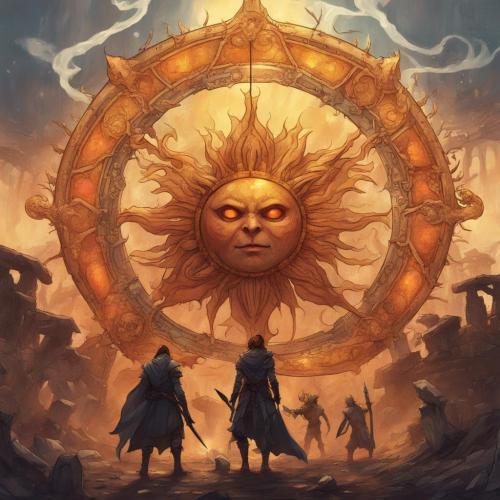
The sea gave up its dead, and death and the grave gave up their dead. And all were judged according to their deeds. Apocalypse 20:13 (NLT)
0 notes
Text
0 notes
Note
What is the most frightening storm you have ever found yourself too close to?

"Elemental firestorm in the Ohn'ahran Plains. If it's hot enough, and it was, you can get pyrocumulus clouds, which grow rapidly and start setting down lightning strikes that spark more fires and the Primalists were also channeling fire tornado nonsense to make everything worse at the same time.
It got outta hand pretty quick but I got some good pictures."
( Thanks @nahisummerhold! )
1 note
·
View note
Text
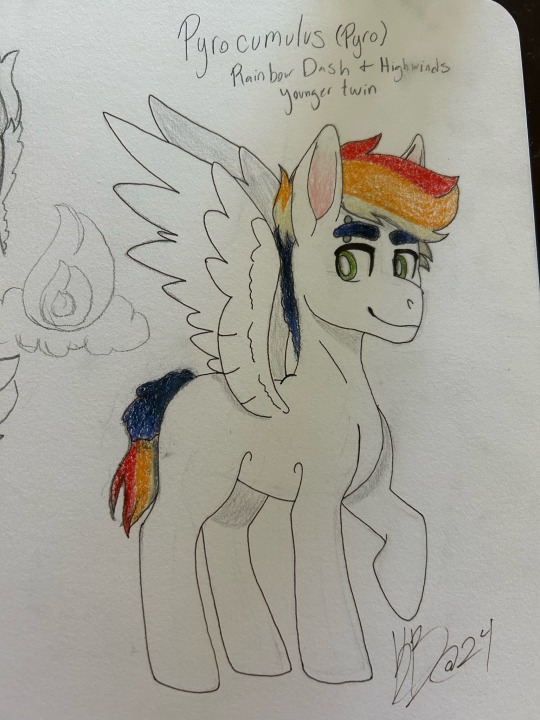
Name: Pyrocumulus (aka Pyro)
Parents: Rainbow Dash and High Wind
Personality: Cocky with a hint of insecurity, is very full of himself
Siblings: Cirrus Cloud (twin sister)
~~~~~~~~~~~~~~~~~~~~~~~~~~~~~~~~~~~~~~~~~~~~~~~~~~
He is the younger twin of Rainbow Dash, he is almost exactly like his mother (RD) he loves to fly and perform but is a lot more clumsy.
He has a fantastic relationship with all his family members especially his sister.
He is always trying to perform stunts but half the time ends up on fire.
I want to do more of these ng anger make my own universe unfortunately I don’t have a I pad or computer I or I’d be doing digital, but I still want to share my art so I hope you appreciate it 😁😁
1 note
·
View note